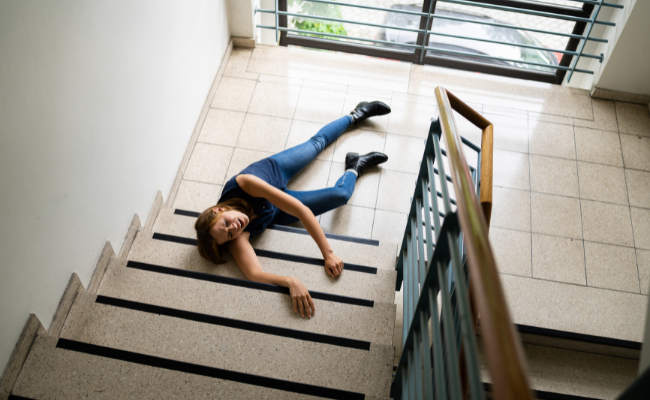How to Treat Falls?
- November 30, 2023
- No Comments

What is a Fall?
Falls, characterized by individuals unexpectedly and involuntarily coming to rest on the ground or a lower level, pose potential harm or injury. These incidents can occur across various settings and are prevalent among older adults, though they can impact individuals of all ages. Recognizing the causes and employing effective treatment strategies becomes imperative to mitigate the associated risks of falls—an incident that leads to an individual unintentionally finding themselves at rest on the ground, floor, or a lower surface.
Why Do Falls Occur?
Numerous factors contribute to the occurrence of falls. One primary factor is a decline in physical strength and balance, often associated with aging. Muscle weakness, impaired vision, and reduced flexibility can compromise an individual's ability to maintain stability. Environmental factors, such as uneven surfaces, poor lighting, or obstacles in the pathway, also play a significant role in falls. Medical conditions, medications, and lifestyle choices can further increase the risk of falls.
How to Identify and Assess Fall Risk?
Identifying and assessing fall risk is a crucial step in developing an effective treatment plan. Healthcare professionals use a comprehensive approach to evaluate an individual's risk factors. This assessment includes a review of medical history, medication analysis, vision assessment, and evaluation of balance and gait. Identifying specific risk factors allows healthcare providers to tailor interventions to address the unique needs of each individual.
Treatment Solutions for Falls:
- Exercise Programs: Regular physical activity is a key component in preventing falls. Exercise programs that focus on strength training, balance exercises, and flexibility can improve muscle tone and coordination, reducing the risk of falls. Tai Chi, a low-impact exercise that emphasizes balance and control, has shown particular effectiveness in preventing falls among older adults.
- Home Modifications: Modifying the home environment is an essential aspect of fall prevention. Simple changes, such as installing grab bars in bathrooms, improving lighting in hallways, and removing tripping hazards, can significantly reduce the risk of falls. Occupational therapists can provide valuable insights and recommendations for home modifications based on an individual's specific needs.
- Medication Management: Certain medications may contribute to dizziness or lightheadedness, increasing the risk of falls. Healthcare providers can review medications and adjust dosages or switch to alternative drugs with fewer side effects. It's crucial for individuals to communicate openly with their healthcare team about any concerns regarding medication and to follow prescribed dosages.
- Vision Correction: Poor vision is a common contributor to falls. Regular eye exams and timely correction of vision problems, such as the need for glasses or cataract surgery, can significantly improve an individual's ability to navigate their surroundings safely.
- Assistive Devices: Depending on an individual's needs, healthcare professionals may recommend the use of assistive devices such as canes, walkers, or orthopedic shoes. These devices provide additional support and stability, enhancing mobility and reducing the risk of falls.
- Education and Awareness: Increasing awareness about fall risk and educating individuals on preventive measures are integral components of treatment. Healthcare providers can offer guidance on proper footwear, the importance of staying hydrated, and techniques for getting up safely after a fall.
Benefits of Fall Prevention:
- Enhanced Quality of Life: By addressing and mitigating fall risk factors, individuals can maintain their independence and enjoy a higher quality of life. The fear of falling often restricts activities, and preventing falls allows individuals to engage in social and recreational pursuits without unnecessary limitations.
- Reduced Healthcare Costs: Falls can lead to serious injuries, resulting in hospitalization and extensive medical costs. A proactive approach to fall prevention reduces the likelihood of injuries, minimizing the financial burden on individuals and the healthcare system.
- Improved Emotional Well-being: The fear of falling can have a significant impact on mental health. Addressing fall risk factors and implementing preventive measures can alleviate anxiety and promote emotional well-being. Individuals feel more confident and secure in their daily activities.
- Maintained Functional Independence: Fall prevention strategies help individuals maintain their functional independence by preserving their ability to perform daily activities without assistance. This is particularly important for older adults who want to age in place and remain active in their communities.
- Prevention of Secondary Complications: Falls can lead to a cascade of health issues, including fractures, head injuries, and complications arising from prolonged immobility. Preventing falls helps avoid these secondary complications, promoting overall health and well-being.
Comments (0)